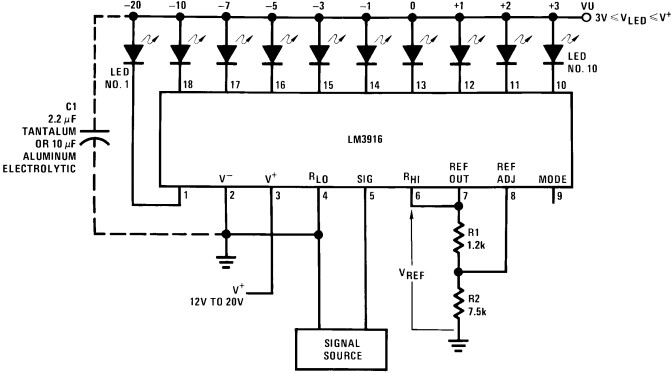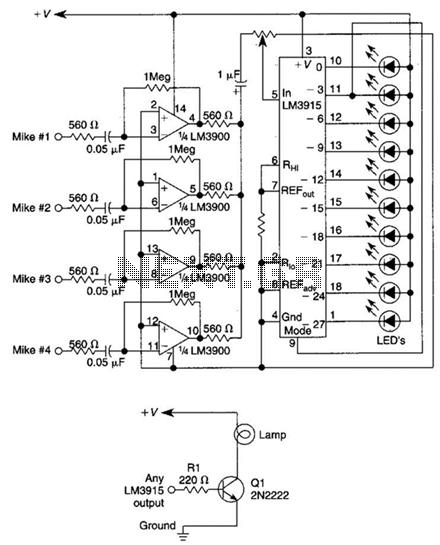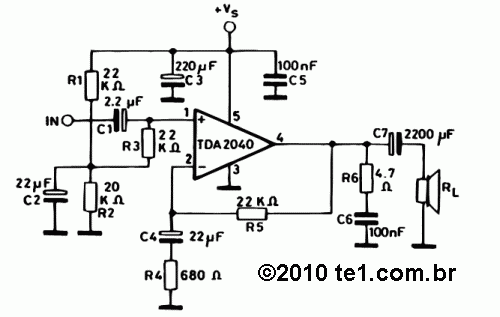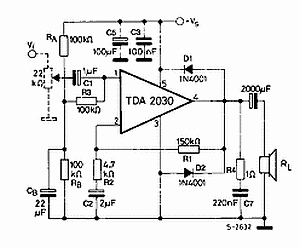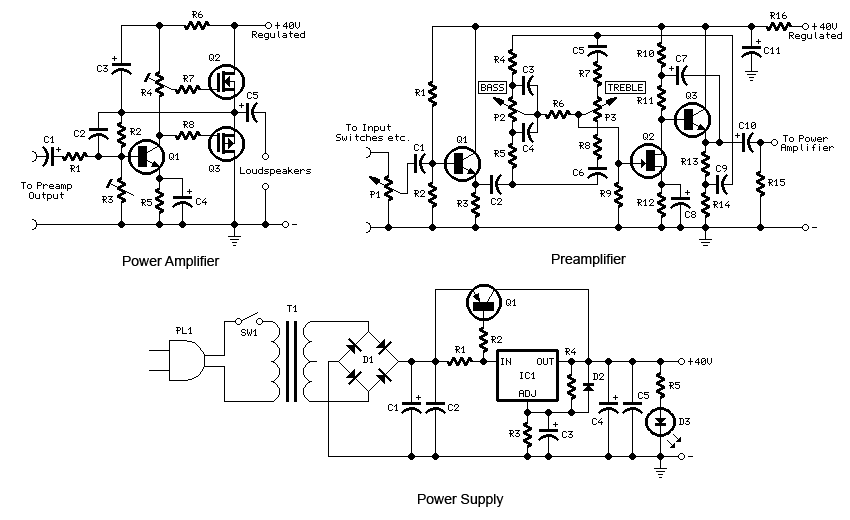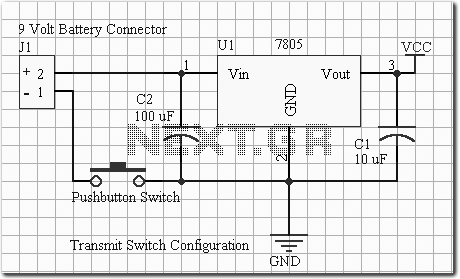
Build a Variable-Frequency Audio Band pass FilterCircuit

This variable-frequency audio bandpass filter is constructed using two 741 operational amplifiers connected in cascade. The two 741 op amps are configured as identical RC active filters and are cascaded to enhance selectivity. The filter's tuning range spans from 500 Hz to 1500 Hz. The overall voltage gain is slightly greater than 1, and the filter's gain is approximately 5. The circuit can manage input signals of 4 V peak-to-peak without distortion. The input impedance of the circuit exceeds 200 kΩ.
This variable-frequency audio bandpass filter utilizes two 741 operational amplifiers (op-amps) arranged in a cascading configuration to achieve enhanced selectivity and performance. Each op-amp is configured as an RC active filter, which allows for precise tuning of the filter's frequency response. The design targets a tuning range from 500 Hz to 1500 Hz, making it suitable for a variety of audio applications where specific frequency bands need to be amplified while attenuating others.
The overall voltage gain of the circuit is designed to be slightly greater than 1, ensuring that the output signal remains proportional to the input signal while providing a gain of approximately 5 for the selected frequency range. This characteristic is particularly beneficial for audio processing applications, where maintaining signal integrity is crucial.
The circuit is capable of handling input signals of up to 4 V peak-to-peak without distortion, indicating a robust design that can accommodate varying signal levels without compromising performance. The input impedance is specified to be greater than 200 kΩ, which allows for minimal loading on the preceding stage of the circuit, thus preserving the signal quality and ensuring compatibility with various audio sources.
In practical applications, this bandpass filter can be utilized in audio equipment to isolate specific frequency ranges, enhance audio clarity, and improve overall sound quality. The cascading op-amp configuration not only improves selectivity but also allows for the adjustment of the filter characteristics through external components, such as resistors and capacitors, enabling customization for specific audio processing needs.This variable-frequency, audio bandpass filter is built around two 741 op amps that are connected in cascade. Two 741 op amps are configured as identical RC active filters and are connected in cascade for better selectivity.
The filter`s tuning range is from 500~Hz to 1500 Hz. The overall voltage gain is slightly greater than 1 and the filter`s is about 5, The circuit can handle input signals of 4 V peak-to-peak without being overdriven. The circuit`s input impedance is over 200 kohm 🔗 External reference
This variable-frequency audio bandpass filter utilizes two 741 operational amplifiers (op-amps) arranged in a cascading configuration to achieve enhanced selectivity and performance. Each op-amp is configured as an RC active filter, which allows for precise tuning of the filter's frequency response. The design targets a tuning range from 500 Hz to 1500 Hz, making it suitable for a variety of audio applications where specific frequency bands need to be amplified while attenuating others.
The overall voltage gain of the circuit is designed to be slightly greater than 1, ensuring that the output signal remains proportional to the input signal while providing a gain of approximately 5 for the selected frequency range. This characteristic is particularly beneficial for audio processing applications, where maintaining signal integrity is crucial.
The circuit is capable of handling input signals of up to 4 V peak-to-peak without distortion, indicating a robust design that can accommodate varying signal levels without compromising performance. The input impedance is specified to be greater than 200 kΩ, which allows for minimal loading on the preceding stage of the circuit, thus preserving the signal quality and ensuring compatibility with various audio sources.
In practical applications, this bandpass filter can be utilized in audio equipment to isolate specific frequency ranges, enhance audio clarity, and improve overall sound quality. The cascading op-amp configuration not only improves selectivity but also allows for the adjustment of the filter characteristics through external components, such as resistors and capacitors, enabling customization for specific audio processing needs.This variable-frequency, audio bandpass filter is built around two 741 op amps that are connected in cascade. Two 741 op amps are configured as identical RC active filters and are connected in cascade for better selectivity.
The filter`s tuning range is from 500~Hz to 1500 Hz. The overall voltage gain is slightly greater than 1 and the filter`s is about 5, The circuit can handle input signals of 4 V peak-to-peak without being overdriven. The circuit`s input impedance is over 200 kohm 🔗 External reference
